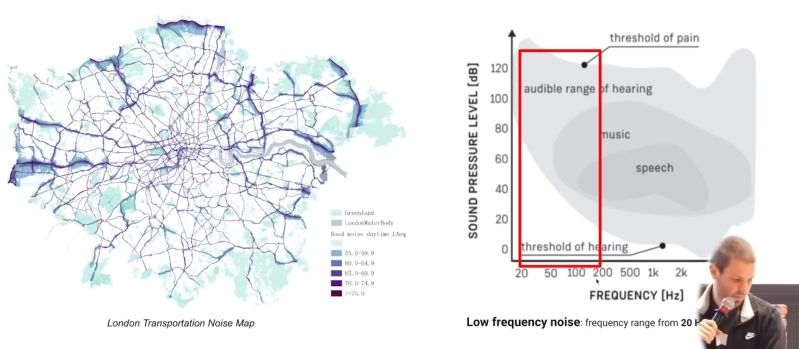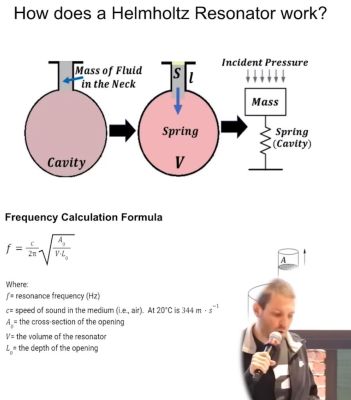
One inevitable aspect of cities and urban life in general is that it is noisy, with traffic being one of the main sources of noise pollution. Finding a way to attenuate especially the low-frequency noise of road traffic was the subject of [Joe Krcma]’s Masters Thesis, the results of which he gave a talk on at the Portland Maker Meetup Club after graduating from University College London. The chosen solution in his thesis are Helmholtz resonators, which are a kind of acoustic spring. Using a carefully selected opening into the cavity, frequencies can be filtered out, and extinguished inside the cavity.

As examples of existing uses of Helmholtz resonators in London, he points at the Queen Elizabeth Hall music venue, as well as the newly opened Queen Elizabeth Line and Paddington Station. For indoor applications there are a number of commercial offerings, but could this be applied to outdoor ceramics as well, to render urban environments into something approaching an oasis of peace and quiet?
For the research, [Joe]’s group developed a number of Helmholtz resonator designs and manufacturing methods, with [Joe] focusing on clay fired versions. For manufacturing, 3D printing of the clay was attempted, which didn’t work out too well. This was followed by slip casting, which allowed for the casting of regular rectangular bricks.
But after issues with making casting hollow bricks work, as well as the cracking of the bricks during firing in the kiln, the work of another student in the group inspired [Joe] to try a different approach. The result was a very uniquely shaped ‘brick’ that, when assembled into a wall, forms three Helmholtz resonators: inside it, as well as two within the space with other bricks. During trials, the bricks showed similar sound-deadening performance as foam and wood. He also made the shape available on Thingiverse, if you want to try printing or casting it yourself.
Absorbing Traffic Noise With Bricks Using Helmholtz Resonators
Source: Manila Flash Report
0 Comments